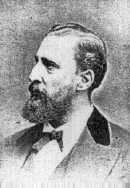Throughout 1829, as contention over the teachings of Elias Hicks continued, not a month went by that did not involve either dealing with or disowning members of the meeting who were sympathetic to his views.
The disagreements over who were the rightful members of the meeting raised another specter: who legally owned the meetinghouse on Fifth Street? Quakers had traditionally sought to resolve property disputes among themselves or through arbitration. However, in August of 1829, the Meeting for Sufferings of Indiana Yearly Meeting (with which Cincinnati Friends were then affiliated) sent a letter to the monthly meetings, suggesting the possibility of taking legal action.

Benjamin Hopkins, a former clerk of the meeting and a follower of Hicks, anticipated that the Orthodox might go to court. He wrote a letter to his attorney, citing the early meeting minutes that made him a trustee and placed the deed of the meetinghouse in his care. “If anything should come up of this nature,” he wrote, “there will be a plea set up that I am disowned and cannot have any claim as trustee of the property. They the Orthodox have appointed William Crossman in the room of Benjamin Hopkins as trustee. How or in what way they expect to obtain the title I know not. I have thought proper to send the above requesting thy attention if anything should come up as respects the title or endeavors to make or get any authority for a new title.”
Although the title to the meetinghouse was an issue, there was also a more practical and pressing concern: possession of the keys to the building. At the time, Thomas Tucker was in charge of the meetinghouse and had the only set of keys. Although he did not openly side with the Hicksites, his wife Ann (who had been dismissed as clerk of the women’s meeting earlier in the year) most decidedly did. For the previous few months, Tucker himself was being dealt with for a different problem: “the frequent and unnecessary use of spirituous liquors.” In anticipation of Tucker’s disownment for continuing to “make use of that destructive article to excess,” Ephraim Morgan and John Davis called on him to get the keys. Perhaps out of spite for being chastised about his drinking, or perhaps influenced by his wife, Tucker informed the men that he no longer had the keys. He had given them to the Hicksites—Benjamin Hopkins and Jozabad Lodge.
By January of 1830, more than a year after the conflict had begun, it was evident that the Orthodox and Hicksites simply could not go on sharing the same space. With the support of the yearly meeting, a committee of Orthodox Friends was appointed “to take into consideration the propriety of changing the place of holding our meetings.” By the following month, they unanimously reported the following:
. . . [The] committee [feels] willing to recommend to the meeting the adoption of measures for the speedy erection of a meeting house on Friends lot in which we may enjoy our meetings undisturbed and according to the order of our discipline.
William Crossman, Lot Pugh, Hezekiah Sanders, and Ephraim Morgan began collecting money to enable the construction of a new brick building for the exclusive use of the Orthodox, a few scant yards away from the log meetinghouse where they had worshiped for the previous 15 years. The project proceeded quite quickly. By April of 1830, the committee reported that “the house is ready for the reception of Friends.”
As soon as the Orthodox Friends had gathered in a place where they could hold their meetings without interruption or dissent, they once again began to conduct business as usual. They responded to queries, appointed a committee to receive donations of books and money for the purpose of establishing a library at the new meetinghouse, and directed the clerk to notify the quarterly meeting that “all our meetings for worship and discipline be hereafter held in this house at the usual times.”
This article comes from the book Friends Past and Present: The Bicentennial History of Cincinnati Friends Meeting (1815–2015). You can obtain a copy of the printed book or a Kindle version from Amazon.com. The proceeds of all sales go to Cincinnati Friends Meeting.